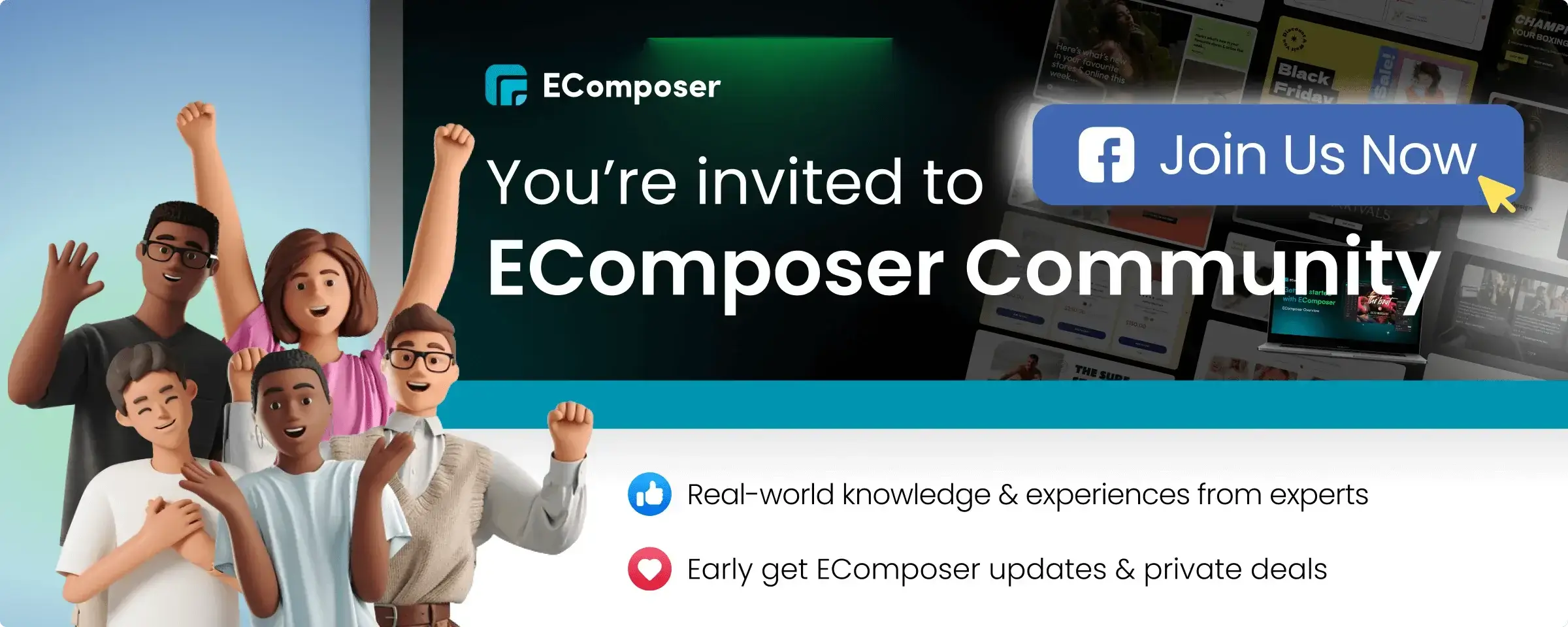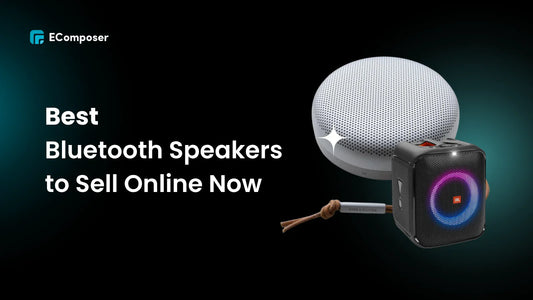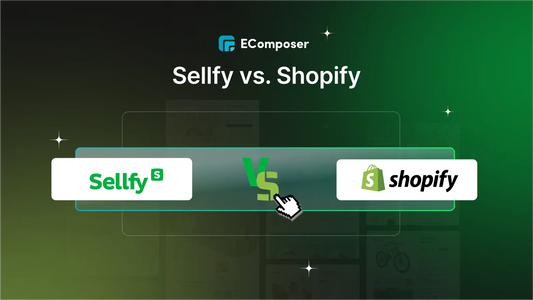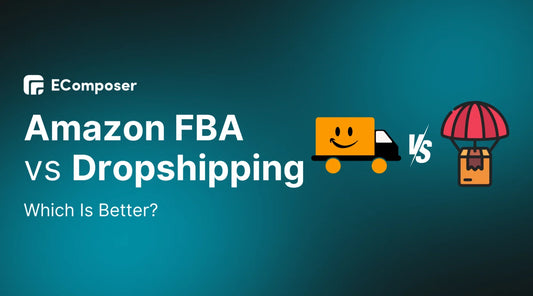Printful vs. Printify: Which is better? (Full Review 2025)
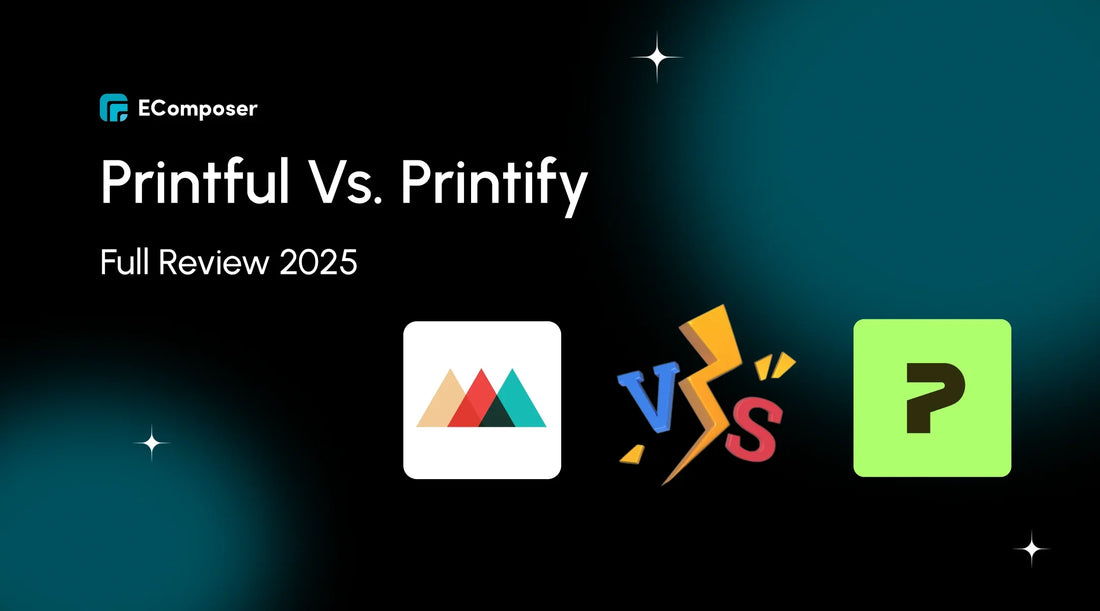
Table Of Contents
Let’s be real! Choosing between Printful and Printify can be a headache. I’ve been there, staring at tabs, comparing prices, reading reviews, and still thinking… “Okay, but which one’s actually better for my store?”
The truth? It depends on what you need. That’s why I put together this full review - no fluff, no hype. Just a clear, honest breakdown of what each platform does well (and where they fall short), so you can pick the one that actually fits you in 2025.
Printful and Printify: Platform Overview
Let’s start with the basics. You’ve probably seen both names tossed around in the print-on-demand space, but here’s the truth: they may offer similar services on the surface, yet how they operate behind the scenes is completely different, and that can seriously affect your store’s performance.
Printful: Built for Control & Consistency
Founded back in 2013, Printful has grown into one of the most trusted POD services, especially among sellers who care about brand image and top-tier quality. With headquarters in Charlotte, North Carolina, Printful owns its own printing and fulfillment centers across the U.S., Mexico, and Europe. That means your orders don’t go through intermediaries - they're printed, packed, and shipped directly by Printful’s team.
What does that mean for you? More control, better quality checks, and generally faster, more reliable shipping - especially if your customers are in the U.S. or Europe. It’s not the cheapest option, but if consistency and brand experience are your priorities, Printful’s worth a close look.
Printify: Made for Flexibility & Scale
Printify hit the scene in 2015, with its headquarters in Riga, Latvia, and it quickly became a favorite among entrepreneurs who like to move fast and test big. Instead of doing the printing themselves, Printify connects you with over 80 print providers across the globe. You pick the provider you want based on location, price, rating, or product options.
This approach gives you access to a massive product catalog and often lower base costs - great for sellers focused on profit margins or variety. But it also comes with a trade-off: print quality and shipping speed can vary depending on the provider. So if you're okay with a bit of trial-and-error in exchange for flexibility and cost control, Printify might be your match.
Detailed Comparison Chart: Printful vs. Printify (2025)
|
Feature |
Printful |
Printify |
|
Pricing Model |
No subscription fees; higher per-item costs. Premium services (e.g., branding) are available for a fee. |
Free tier available; lower per-item costs. Premium plan ($29/mo) offers discounts and extra features. |
|
Product Range |
300+ products (apparel, home decor, accessories). Strong focus on quality and consistency. |
800+ products via multiple suppliers. Wider variety, but quality varies by print provider. |
|
Print Quality |
Consistent, high-quality printing with in-house facilities. Fewer supplier variables. |
Depends on the chosen print provider; quality can range from excellent to average. |
|
Shipping Costs |
Starts at $3.99 (US), varies by product/location. Transparent but slightly higher. |
Starts at $2.99 (US), varies by provider. Often cheaper but less predictable. |
|
Shipping Speed |
2-7 business days (US); reliable global network. |
2-10 business days (US); speed varies by provider and location. |
|
Integrations |
Seamless with Shopify, WooCommerce, Etsy, etc. Robust API for custom setups. |
Similar integrations (Shopify, Etsy, etc.) plus broader marketplace options (e.g., Walmart). |
|
Ease of Use |
Intuitive interface, ideal for beginners. Mockup generator is top-notch. |
User-friendly but requires more decision-making due to multiple suppliers. |
|
Branding Options |
Custom labels, pack-ins, and packaging available (extra cost). Strong branding focus. |
Basic branding (e.g., custom labels) via some providers; less consistent. |
|
Customer Support |
24/7 live chat, email, and phone. Highly rated for responsiveness. |
Email and chat support; response time varies, less hands-on than Printful. |
|
Sustainability |
Eco-friendly options (e.g., recycled packaging). Growing focus in 2025. |
Limited eco-options; it depends on the provider. Less emphasis overall. |
|
Global Fulfillment |
Facilities in the US, Europe, Mexico, etc. Efficient worldwide shipping. |
Larger network of print providers globally, but reliability varies. |
|
Best For |
Businesses prioritize quality, branding, and reliability. |
Cost-conscious users or those needing a wide product catalog. |
Key Comparison Points: Pricing, Features,...
Choosing the right print-on-demand partner isn’t just about who offers the most features - it’s about who fits your business model, goals, and customers. Below is a deep dive into the six areas that matter most when comparing Printful and Printify in 2025: pricing, product range, fulfillment, tools, branding, and support.
1. Pricing Models
Printful
Printful operates on a straightforward pricing model: it’s completely free to use. You won’t pay any setup costs or recurring fees. You only pay when an order is placed, covering the product cost, printing, and shipping. However, Printful’s base product prices are generally higher than many competitors, which can lead to smaller profit margins unless you price your products accordingly. On the upside, those higher costs reflect higher in-house quality standards and professional fulfillment.
Printify
Printify also offers a free plan, which gives you access to their entire platform and all print providers. However, they also offer a Premium plan for $29/month. This plan gives you up to 20% off all product-based prices, which can significantly improve your profit margins, especially if you receive a decent volume of orders per month. Printify does not charge for integrations or listings.
Verdict:
- Printful is ideal for sellers who want to keep things simple and don’t mind slightly higher costs for better control.
- Printify’s pricing is more flexible and scalable, especially for sellers focused on maximizing profit margins at scale.
2. Product Range and Quality
Printful
Offers a carefully curated product catalog of around 340+ products. While the selection is smaller than Printify’s, the products are high quality, and Printful handles printing and fulfillment in-house at their facilities. This helps maintain consistent print quality, fabric feel, and color accuracy, even across different orders.
Printful also tends to focus on premium apparel and accessories from well-known brands like Bella+Canvas, Gildan, Champion, Adidas, and more. Products go through quality checks before shipping.
Printify
Printify works with a network of 80+ print providers across the world, offering a catalog of over 900 products - more than double that of Printful. This includes a wide variety of apparel, home décor, accessories, and niche products that Printful doesn’t carry.
Printify does not produce the products itself which means print quality depends on the printing provider selected by users. Your comparison choices can be made simpler through viewable pricing as well as user reviews and local provider locations for each product listed.
Verdict:
- Printful is better for sellers who prioritize product quality and brand consistency.
- Printify wins if you’re looking for more variety or want to experiment with different product types.
3. Shipping and Fulfillment
Printful
Printful owns and operates its fulfillment centers in the United States, Canada, Mexico, Latvia, Spain, and the United Kingdom, which enables faster and more reliable shipping in North America and Europe. Most orders are fulfilled within 2–5 business days, and Printful provides detailed shipping estimates and tracking.
Shipping costs are generally higher compared to Printify, but the reliability and fulfillment speed often justify the cost, especially for customers who expect quick delivery.
Printify
Your fulfillment process at Printify is completely determined by your selection of a print provider from their network. The delivery network of each Printify provider consists of various fulfillment facilities situated throughout the United States along with Europe and Asia, and Australia. The choice of print provider delivers advantages by placing orders near your customers, which in turn minimizes shipping expenses and delivery times.
The shipping services delivered by providers exhibit substantial differences from each other. Some print providers work quickly but inconsistently compared to other providers who need more time to complete their operations. When using Printify, users can view time estimates for fulfillment, but the success of orders depends on external providers.
Verdict:
- Printful offers better shipping consistency and global coverage through its facilities.
- Printify gives you more fulfillment options, but with a greater need for oversight and testing.
4. Integrations and Tools
Printful
Printful integrates directly with Shopify, Etsy, WooCommerce, Squarespace, Amazon, Wix, BigCommerce, and other major platforms. It also supports manual order fulfillment and API access for custom stores.
Printful’s dashboard includes a mockup generator, product templates, order tracking, profit calculators, and even warehouse services for storing your inventory. The UI is simple to navigate, easy on the eyes, and ideal for beginners.
Printify
Printify also integrates with Shopify, Etsy, WooCommerce, Wix, BigCommerce, and recently added eBay. Their dashboard includes a mockup generator, order tracking, and provider filters for comparing prices and fulfillment times. Printify lacks some of the advanced inventory and branding tools Printful offers, but compensates with simplicity and flexibility.
Verdict:
- Printful is more robust if you want an all-in-one solution with warehouse and branding support.
- Printify is perfect for sellers who want a clean, flexible platform with strong core integrations.
5. Branding and Customization
Printful
Printful makes itself visible in this particular aspect. The platform enables users to customize their brand through features such as packing slips, packing inserts as well as inside/outside labels and logo stickers and shipping label branding. The combination produces a superior unboxing experience which is uncommon in the POD industry.
Custom branding is available for most products, and Printful lets you store branded materials (like thank-you cards) at their warehouses to include with orders.
Printify
Branding with Printify is more limited and largely depends on the individual print provider. Some providers offer custom branding (like neck labels or pack-ins), but many don’t. There's no centralized branded packaging or custom label support across the platform like Printful offers.
Verdict:
- If brand identity and packaging matter to your business, Printful gives you far more control.
- If you're less focused on the unboxing experience, Printify’s basic options may be sufficient.
6. Customer Support and Resources
Printful
Printful offers 24/7 live chat and email support, along with an extensive help center, video tutorials, and blog content. Their response times are fast, and the support team is knowledgeable about both technical issues and general eCommerce questions.
Printify
Printify provides email support and live chat, but the live chat isn’t available 24/7. The help center is solid, and they offer plenty of beginner resources and product guides. However, due to the third-party nature of their providers, resolving fulfillment issues may take longer and involve multiple parties.
Verdict:
- Printful delivers more reliable, hands-on customer service with faster support access.
- Printify’s support is helpful but more limited and slightly slower in comparison.
Pros & Cons - The real trade-offs
Printful – Pros and Cons
Pros:
- High-quality products with consistent print results
- In-house production = better control and faster, more reliable shipping
- Excellent branding features (custom labels, packaging inserts, branded tracking)
- 24/7 customer support and responsive live chat
- User-friendly tools for mockups, profit calculation, and product management
- No monthly fees or subscriptions required
Cons:
- Higher base prices implemented by providers may gradually reduce profit margins.
- Printify offers more products in its inventory than Ringu.
- Customers need to allocate extra expenses for shipping since the price rises substantially for deliveries outside the country.
- The system offers restricted options for partner selection in the fulfillment process
Best for:
The deliberate sellers who want both customer satisfaction and high-quality products and brand experiences and they will spend more for that assurance.
Printify – Pros and Cons
Pros:
- Lower base prices, especially with the Premium plan (up to 20% off)
- Massive product catalog with over 900+ items
- More provider options = flexibility in pricing and fulfillment locations
- Easy to test new products or target multiple niches
- Clean, simple interface that’s beginner-friendly
Cons:
- Print quality and fulfillment speed vary between providers
- Limited branding features, depending on the print provider
- Customer support is good, but not 24/7, and can be slower during peak times
- Requires more hands-on research to find reliable providers
Best for:
Merchants who want to keep costs low, move fast, or offer a wide variety of products, even if it means giving up some consistency and branding control.
What is suitable for you?
If I were launching a long-term brand where customer experience, consistency, and visual identity really matter, like a premium clothing line, a lifestyle brand, or something I want influencers to unbox on camera, I’d go with Printful. Why? Because the quality is reliable, the branding options are solid, and the experience feels polished from click to delivery. It’s more expensive, but worth it if you’re playing the long game.
But if I were just starting, maybe testing a bunch of product ideas, or running multiple niche stores to find what sticks, I’d definitely choose Printify. The product variety is massive, the lower base prices help with profit margins, and with the Premium plan, it’s easy to scale if something takes off. Yes, you’ll need to do a bit more homework (checking provider ratings, sample orders, etc.), but it gives you a lot of freedom to experiment.
So, what’s suitable for you?
Here’s a quick guide based on common goals:
|
Your Goal |
Best Pick |
|
Building a premium brand |
Printful |
|
Want strong packaging and branding |
Printful |
|
Just starting with low risk |
Printify |
|
Testing multiple product ideas/niches |
Printify |
|
Selling in high volume (and wanting savings) |
Printify Premium |
|
Prioritizing reliable shipping & quality |
Printful |
|
Need a wide product variety |
Printify |
Bonus: POD Trends 2025 & Advanced Tips for Success
Key POD Trends to Watch in 2025
1. Sustainability is becoming a must, not a nice-to-have
More consumers, especially Gen Z, are actively seeking eco-friendly brands. That means demand is rising for organic fabrics, recycled materials, and ethical production.
Tip: Choose eco-friendly products from Printful’s sustainable collection or work with Printify providers that offer green options.
2. Hyper-niche products are outperforming generic ones
It’s no longer about selling “cool t-shirts”, it’s about selling “funny gym shirts for dachshund owners who love coffee.” Specific, weirdly targeted niches win because they create an instant emotional connection.
Tip: Use social listening or niche communities (Reddit, Facebook groups, TikTok comments) to find underserved audiences.
3. TikTok and short-form video are driving sales
The fastest-growing POD stores aren’t relying on Facebook ads alone; they’re leveraging short, personality-driven content to build communities and go viral.
Tip: Start small. Film quick product videos, packaging clips, or even customer reaction content. Authenticity beats polish.
4. AI-generated designs are on the rise
Designers are now using AI tools (like Midjourney, DALL·E, and Canva AI) to brainstorm, iterate, and scale product ideas faster than ever.
Tip: Use AI to test design concepts quickly, but always add your unique brand voice. Don’t just rely on trends, build a vibe.
5. Branded experience = higher retention
Shoppers are more likely to return if your packaging, product, and post-purchase emails feel cohesive and on-brand.
Tip: Even if you're using Printify, try to standardize your product selection and visuals. If you're using Printful, take advantage of branded labels and packaging inserts to elevate the experience.
Advanced Tips to Grow Your POD Store in 2025
-
Order samples regularly
You can’t fix what you don’t see. Test new products, verify print quality, and experience your store as a customer would. -
Don’t just sell products, tell stories.
Your design is the starting point, but your message is what sells. What’s the story behind your product? Who is it for? How does it make their life better or funnier or more “them”? -
Bundle products for higher AOV (average order value)
Selling a mug? Match it with a suitable t-shirt or hoodie. Printful even allows you to store non-printed items if you want to include extras. -
Use abandoned cart emails wisely.
Instead of just saying “Hey, you forgot something,” try something human: “Hey [Name], we saved your shirt; your dog will love it.” Friendly copy goes a long way. -
Think long-term, even if you’re testing.
It’s easy to treat POD like a quick hustle, but the brands that last treat every customer like someone who might come back next month. Give them a reason to.
Final Words - Which is right for you?
Printful and Printify each have their strengths, so the right choice really depends on what you're trying to build. If quality and brand presentation matter most, Printful is a solid bet. If you're more focused on flexibility and keeping costs down, Printify might suit you better. Don’t overthink it, try things out, see what works. The important thing is to get started. You can always refine as you grow.


